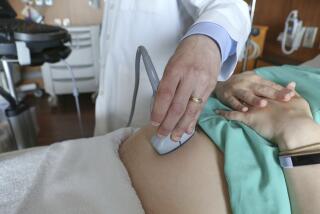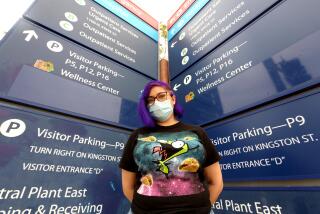Hawthorne Hospital to Shut Doors
- Share via
Robert F. Kennedy Medical Center in Hawthorne announced Thursday that it will shut down Dec. 31, becoming the sixth Los Angeles County emergency room this year to close its doors because of financial problems.
The move will force patients to find another hospital just as the flu season hits and underscores the strain facing the county’s teetering emergency medical system.
Officials at nearby hospitals questioned whether their emergency rooms would be able to handle the increased load and worry that patient care could suffer.
“This is really a crisis,” said Michael Rembis, chief executive of Centinela Hospital in Inglewood, the nearest hospital. “It won’t be possible for hospitals in RFK’s immediate vicinity to handle their ER volume.”
Centinela already sees about 41,000 patients a year in the emergency room, which often fills up at times during the day, hospital officials said.
Rembis said he expected waiting times to increase, and other nearby hospitals expressed concern that patients could be forced to wait on gurneys in hallways.
RFK Medical Center joins hospitals such as Northridge Hospital Medical Center’s Sherman Way Campus in Van Nuys and ELAStar Community Hospital in East Los Angeles to announce closure plans -- largely because of the losses that come with treating uninsured and underinsured patients.
The emergency room at Community Hospital of Gardena also has shut down.
County officials, meanwhile, are debating whether to close the trauma center at Martin Luther King Jr./Drew Medical Center, though the emergency room would remain open.
Since the mid-1980s, 18 emergency rooms have closed. Ten trauma centers -- which treat the most critically injured patients -- also have shut their doors. With RFK Medical Center’s demise, the county will be left with 79 emergency rooms.
“It becomes a domino effect,” said Carol Meyer, the county’s head of emergency services. “What happens is those patients seeking emergency care go to the next hospital, which increases their load and potentially delays.”
The 229-bed Hawthorne hospital has lost $52 million since January 2002 and was projected to lose another $25 million in 2005, said Larry Stahl, the chief operating officer.
The hospital board decided that the facility was not generating enough business for inpatient services -- such as diabetes care or obstetrics -- that insurance typically covers.
On a typical day, the hospital has about 50 patients in beds and treats 65 patients in the emergency room.
RFK Medical Center does not have many of the services that a physician might want for his or her patient, Stahl said.
“If a physician has a patient with a severe heart problem, while we can treat their inpatient stay, we wouldn’t be able to do a cardiac catheterization or open heart surgery,” he said.
Like other hospitals that have closed down, RFK Medical Center was hit by rising costs for nurses to fill state-mandated nurse-to-patient ratios that went into effect in January and the heavy expense of seismic retrofitting required by state law.
Stahl said RFK Medical Center’s emergency room, which serves 24,000 patients a year, was not a major financial drain now, but officials worried that it could become one if the hospital remained open.
Emergency rooms are generally a greater drain on hospital finances than other departments because more of their patients don’t have insurance.
A study by the California Medical Assn. released this week found that Los Angeles County emergency rooms lost $143 million in the 2001-02 fiscal year, the latest data available.
As the remaining emergency rooms fill up, paramedics then have to drive farther to find available care, Meyer said.
If a new 911 call comes from an area where the paramedics are busy looking for a hospital where they can drop off a patient, it may take longer for an ambulance to arrive as dispatchers look for a paramedic who is free, she said.
“In the last five years, it has really been escalating,” Meyer said.
Frederick Carr, co-director of the emergency room at Little Company of Mary Hospital in Torrance, said RFK Medical Center’s Dec. 31 closure would come at the worst possible time.
“That’s the height of flu season,” he said. “We already have three-, four-hour waits” in the ER at that time of year.
Carr said he also worries that when his department runs out of beds, patients brought in by ambulance might have to wait on stretchers, keeping those ambulances from rushing off to the next heart attack victim.
At worst, doctors might have to examine patients in the hallway, leading to a loss of privacy, and then ask patients to wait one or two days to go to their own room.
“It’s hard having a healing environment like that,” Carr said.
Community leaders said the loss of RFK Medical Center would be a major blow, leaving Hawthorne without a hospital. Mayor Larry Guidi, who took his daughter there when she had a piece of metal stuck in her eye and who has gone himself for high blood pressure, said he felt “sick” at the thought of RFK Medical Center’s closure.
“We’re not going to sleep,” he said. “We’re going to do something about it.”
More to Read
Sign up for Essential California
The most important California stories and recommendations in your inbox every morning.
You may occasionally receive promotional content from the Los Angeles Times.













